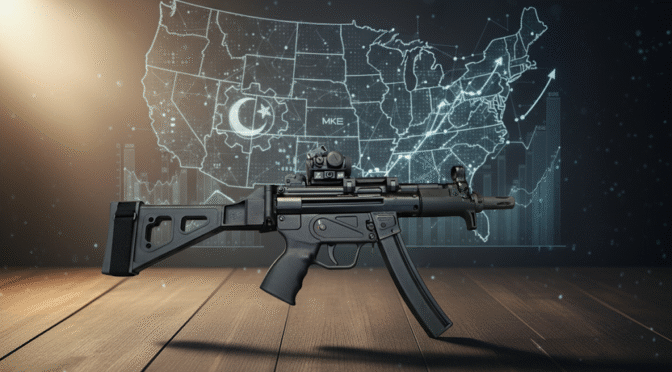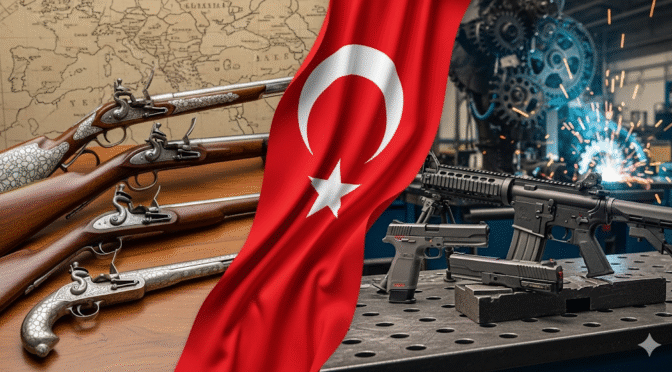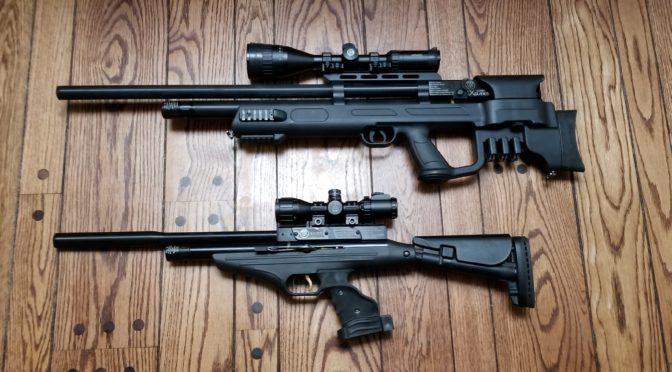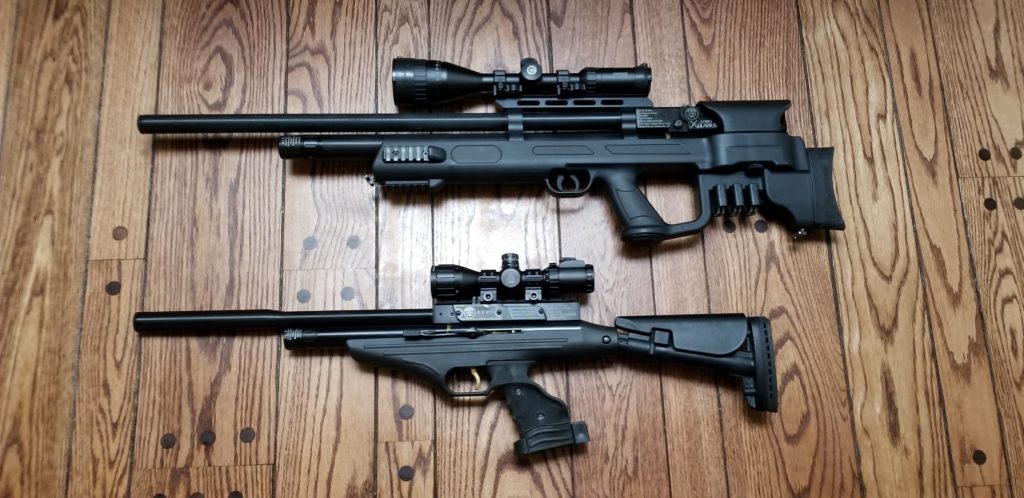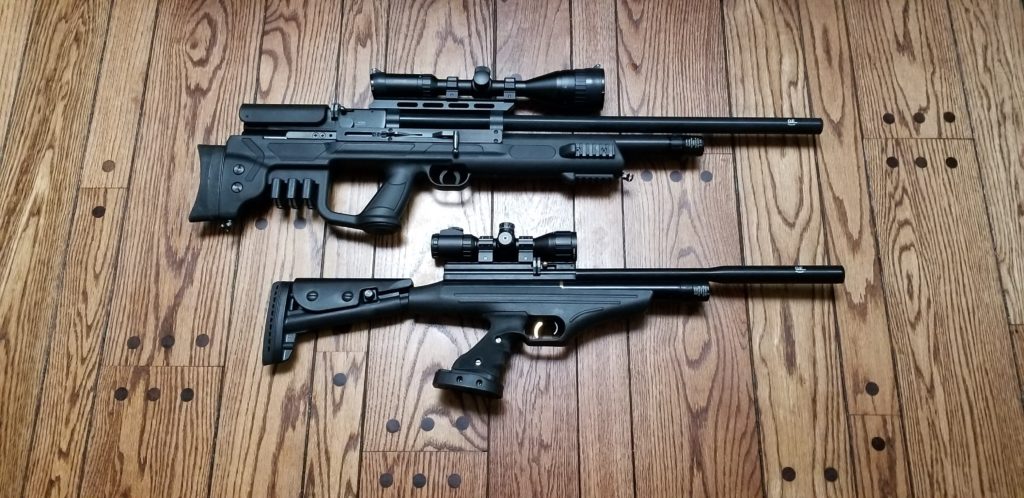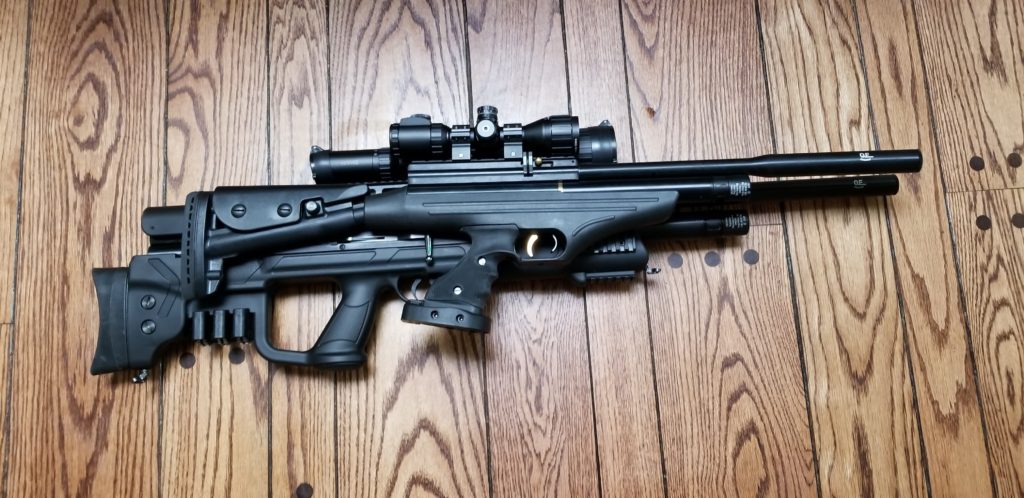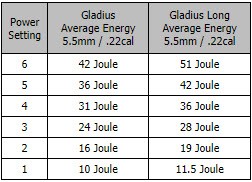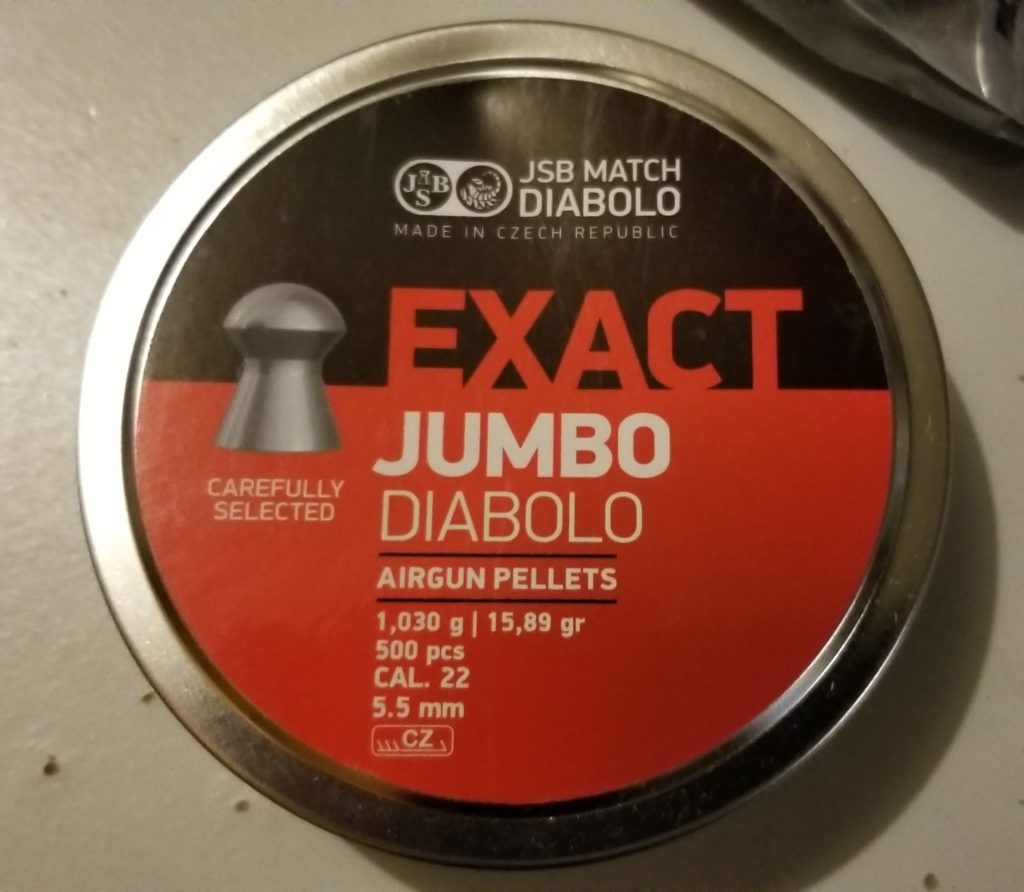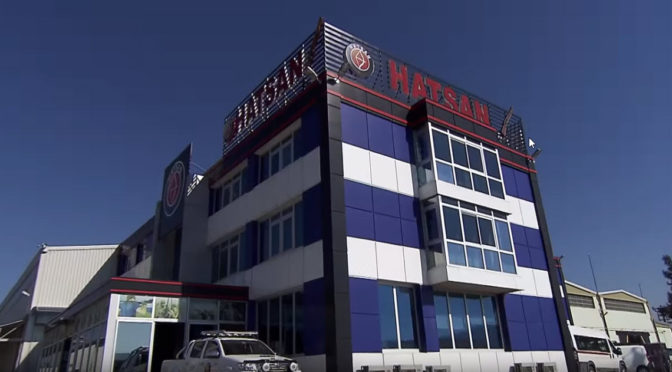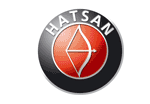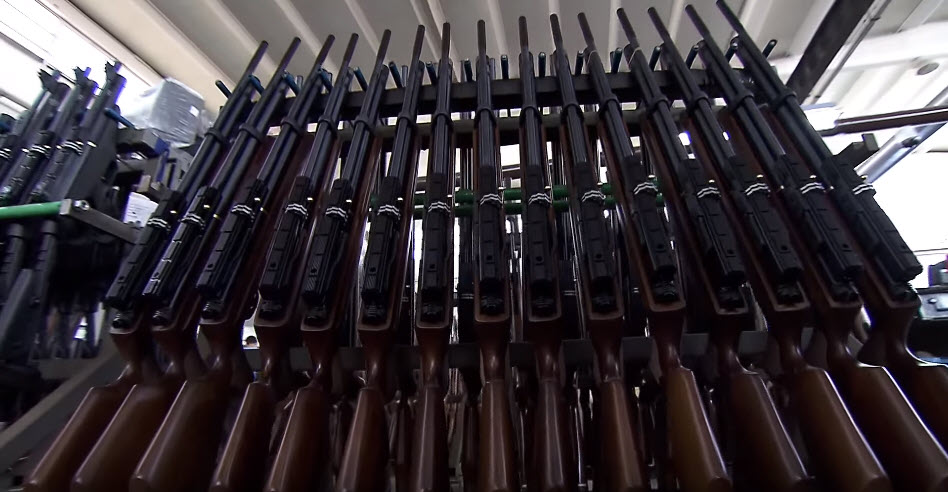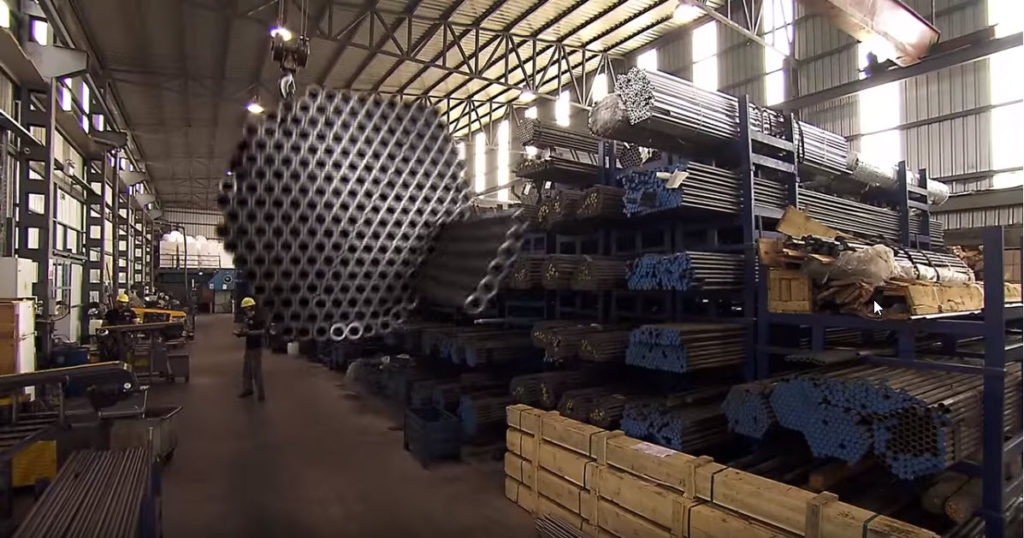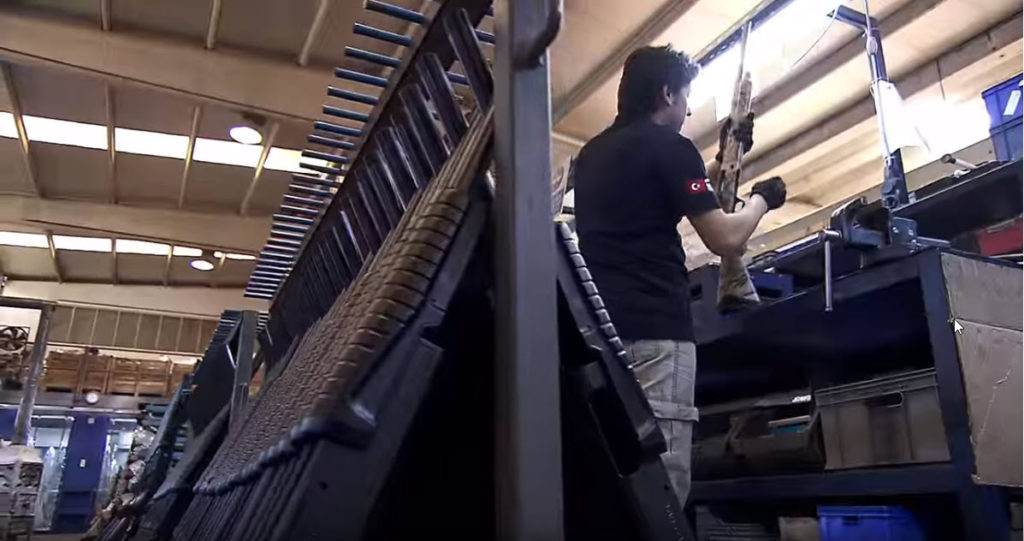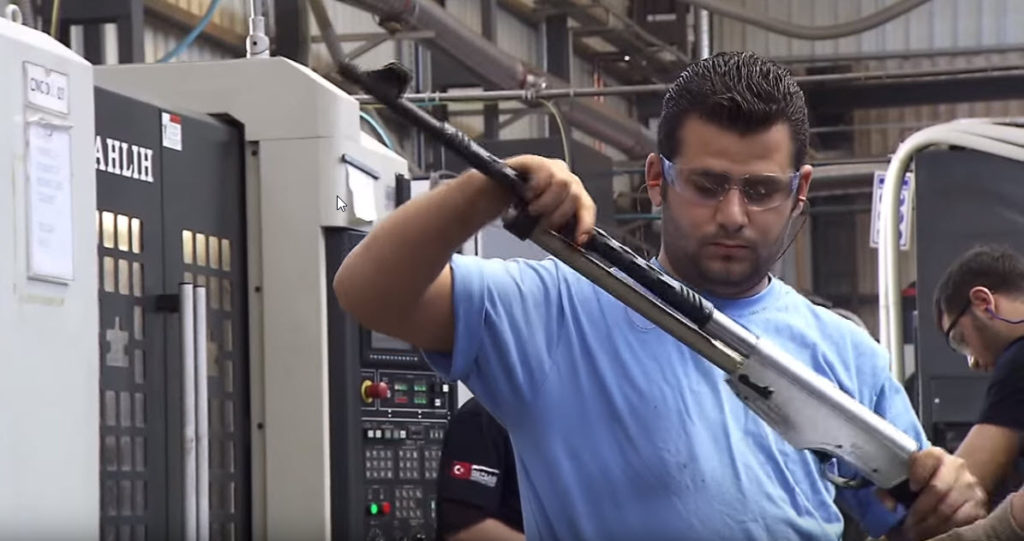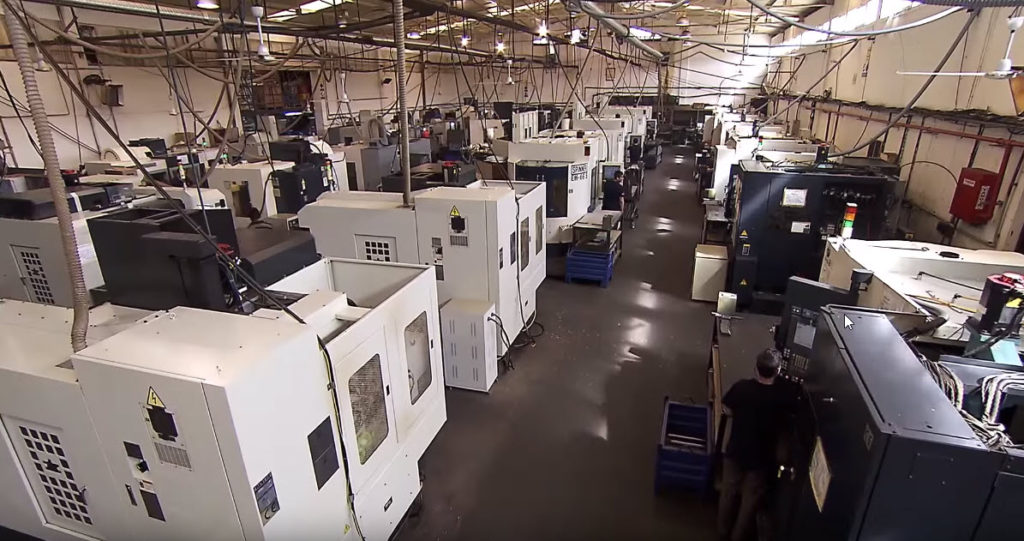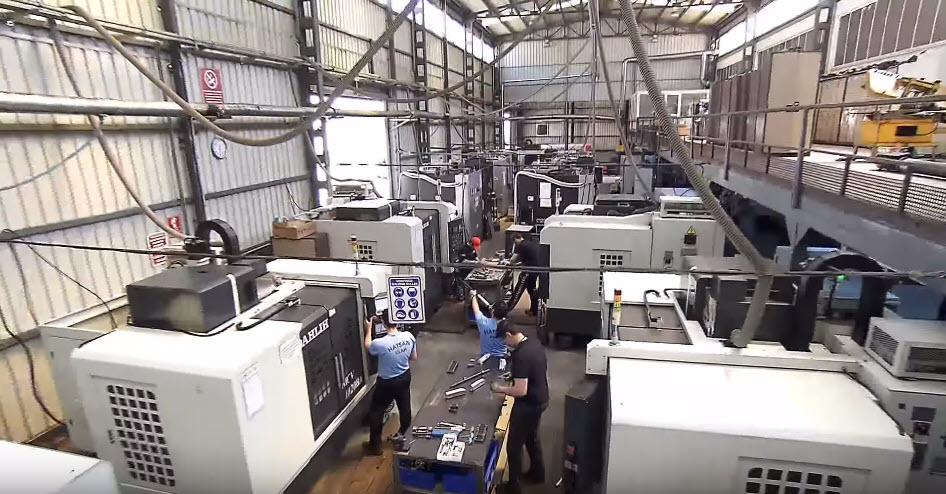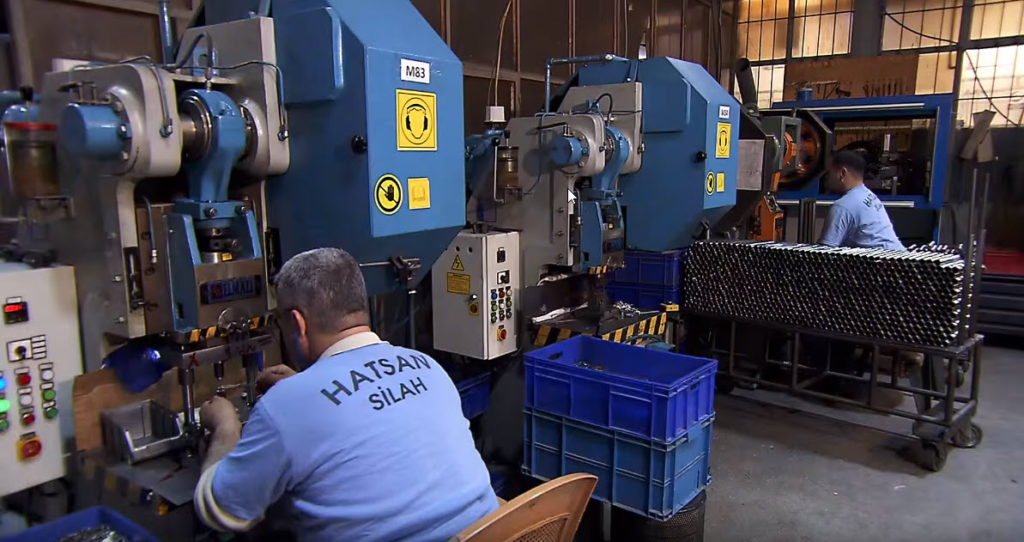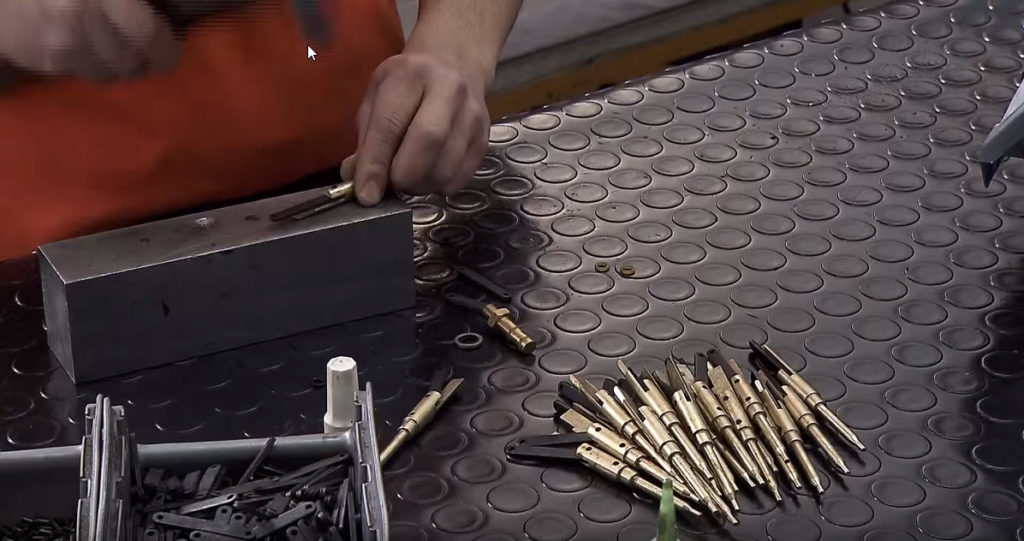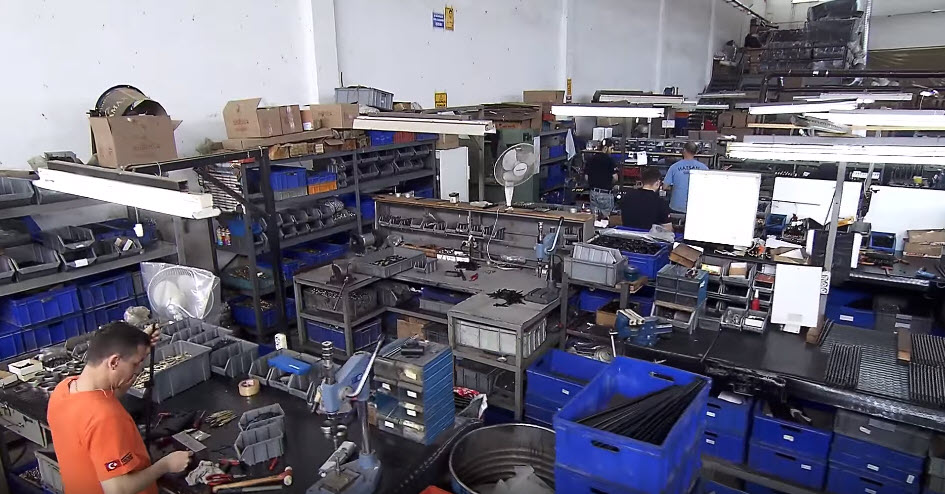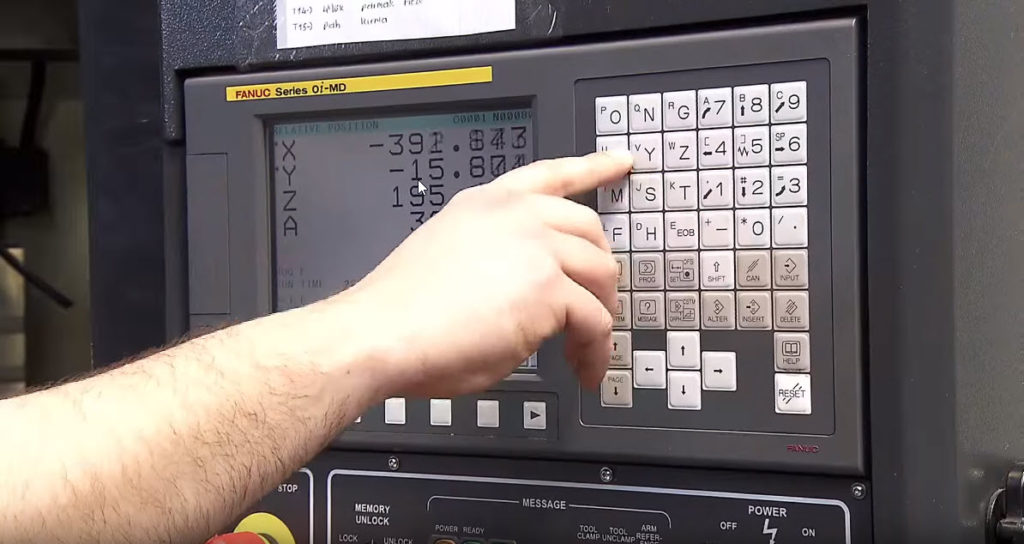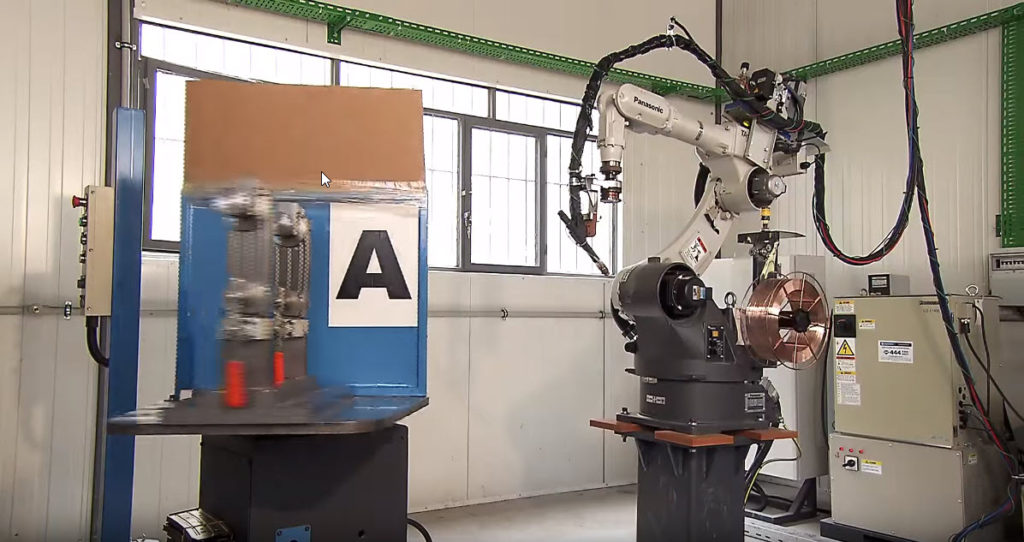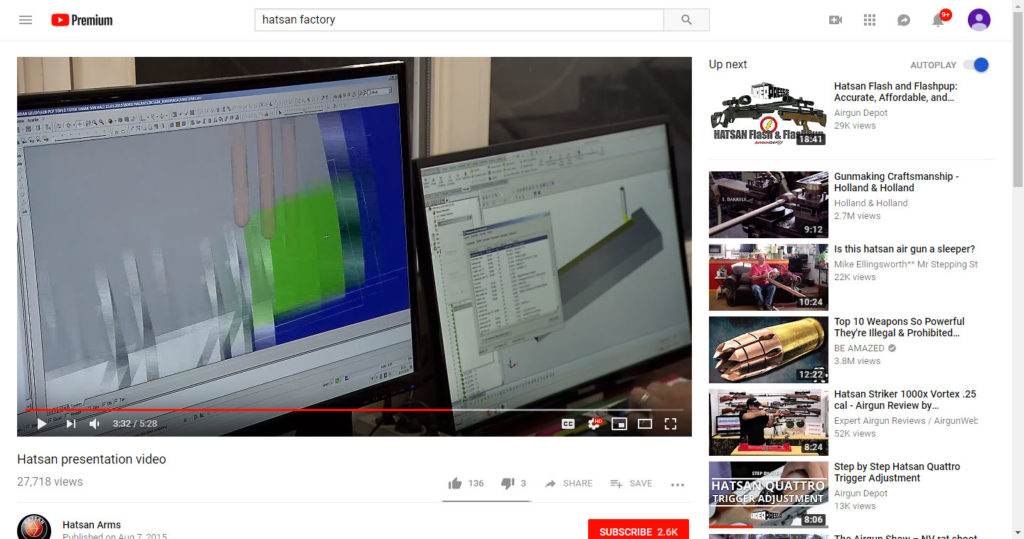This report provides a comprehensive analysis of the market position, product architecture, and strategic outlook for small arms manufactured by the Turkish defense enterprise MKE (Mechanical and Chemical Industry Corporation) and sold in the United States. The analysis reveals that MKE’s U.S. market strategy is centered on a value-authenticity proposition, leveraging its status as a licensed producer of Heckler & Koch (H&K) patterned firearms to capture a specific and highly engaged segment of the civilian enthusiast market.
The core of MKE’s U.S. portfolio is the AP5 platform, a series of semi-automatic pistols patterned after the iconic H&K MP5. This platform has achieved significant market penetration by offering the revered roller-delayed blowback operating system and a high degree of parts compatibility with the original German design at a price point substantially below that of genuine H&K imports. This strategy successfully capitalizes on the MP5’s powerful “halo effect,” driven by decades of cultural significance.
However, MKE’s market success is tempered by significant strategic challenges. The most prominent of these is inconsistent quality control, particularly in cosmetic areas such as welds and finish, which detracts from the perceived value of the product. Furthermore, the brand’s reputation is impacted by a manufacturer-recommended 500-round “break-in” period, during which reliability can be subpar. This practice effectively transfers the final stage of quality assurance to the consumer, creating a negative initial ownership experience. Finally, MKE’s brand perception in the U.S. is inextricably linked to its importer, Century Arms, an entity with a pre-existing and mixed reputation for customer service and warranty support.
In conclusion, MKE’s core value proposition—an authentic, licensed H&K experience at an accessible price—is fundamentally strong. However, this strength is consistently undermined by tangible and perceptual issues in manufacturing execution and post-sale support. These weaknesses present a critical vulnerability that can be exploited by a growing field of U.S.-made and other imported competitors.
Product Architecture and Market Segmentation
MKE Corporate Background: A Legacy Defense Enterprise
Makine ve Kimya Endüstrisi (MKE) is not a new commercial entity but a storied Turkish state-owned defense corporation with a manufacturing lineage tracing back to the Ottoman Empire’s “Royal Arsenal” in the 15th century.1 Formally established in 1950, MKE has served for decades as a primary supplier of military hardware to the Turkish Armed Forces and other NATO-aligned nations.1 This background as a large-scale, state-backed military industrial complex is fundamental to understanding its products and market strategy.
The cornerstone of MKE’s U.S. civilian market offerings is its history of licensed production agreements with Heckler & Koch. MKE has long produced military versions of seminal H&K designs, including the G3 battle rifle (designated T-41), the HK33 rifle (T-50), and, most critically for the U.S. market, the MP5 submachine gun (T-94).2 This licensed production, conducted on H&K-supplied tooling and specifications, provides MKE with a unique claim to authenticity that most other clone manufacturers lack.
This deep-seated identity as a military contractor presents a dual-edged reality for the brand in the U.S. consumer space. On one hand, it confers a level of legitimacy and manufacturing credibility; these are not reverse-engineered copies but firearms produced by a NATO-standard defense enterprise with “centuries of experience”.1 On the other hand, the institutional priorities of a military contractor are fundamentally different from the expectations of the American civilian firearms enthusiast. Military production prioritizes functional reliability, durability, and cost-effectiveness at a massive scale. Cosmetic perfection, such as the aesthetic quality of welds or the uniformity of a paint finish, is a tertiary concern at best. This institutional mindset directly manifests in the final product. The MKE AP5 firearms are widely regarded as mechanically robust and true to the original H&K pattern, yet they are frequently criticized for cosmetic imperfections.4 This gap between military-grade function and consumer-grade finish represents a core friction point in MKE’s market perception.
The Century Arms Partnership: Gateway to the U.S. Market
MKE’s access to the lucrative U.S. civilian market is entirely facilitated by its partnership with Century Arms, which serves as the exclusive importer and distributor for the AP5 line.6 This relationship is a successor to MKE’s previous importation agreement with Zenith Firearms, which has since pivoted to producing its own U.S.-made MP5 clone, the ZF-5, creating a direct and knowledgeable competitor.8
The role of Century Arms is multifaceted and critical. It manages the complex logistics of importation, navigates federal firearms regulations, and leverages its vast distribution network to place MKE products in dealer showrooms across the country. Crucially, Century Arms is also the sole entity responsible for all U.S.-based customer service, warranty claims, and repairs.10
This symbiotic relationship is both MKE’s greatest asset and its most significant liability. Century’s market presence provides a scale of distribution that MKE could not otherwise achieve. However, Century Arms carries a long-standing and well-documented reputation among U.S. consumers for variable quality control on its domestically manufactured firearms and for customer service experiences that are often perceived as inconsistent. This creates a powerful “reputation by association.” A potential customer’s perception of the MKE AP5 is filtered through their pre-existing perception of Century Arms. Because the entire post-purchase experience—from a simple question to a complex warranty claim—is handled by Century, any friction in that process is attributed not to a distant Turkish manufacturer but to the “AP5 brand” as a whole. This dynamic means that MKE’s product quality and Century’s service quality are inextricably fused in the consumer’s mind, creating a strategic vulnerability where a failure in service can poison the perception of an otherwise sound product.
Platform-Centric Strategy and the “Halo Effect”
MKE’s U.S. market strategy is not one of innovation but of replication and accessibility. The company has focused its efforts on a single, highly desirable product architecture: the H&K-patterned roller-delayed blowback firearm.6 This platform-centric approach allows MKE to capitalize on the immense latent demand for firearms like the MP5 and G3.
The AP5 series, in its various configurations (AP5, AP5-P, AP5-M), directly targets a market segment of enthusiasts, collectors, and historical firearms aficionados. This demand is fueled by the MP5’s iconic status, cemented by decades of appearances in popular culture, from action films like “Die Hard” to countless video games.13 This cultural ubiquity has created a powerful “halo effect,” where the prestige, engineering mystique, and desirability of the original H&K design are transferred to the MKE-produced clone. The roller-delayed blowback system is a central component of this effect, as it is prized by knowledgeable consumers for its uniquely smooth recoil impulse compared to the harsher cycling of more common direct-blowback pistol-caliber carbines.15 By offering this authentic operating system at an accessible price, MKE effectively positions its products as the most direct path for the average consumer to own a piece of firearms history.
Deep Dive Analysis by Product Platform
AP5 (MP5-Pattern) Platform
The AP5 series is the flagship of MKE’s U.S. product line, encompassing several variations that mirror the original H&K MP5 family.
Key Models Analyzed
- AP5: The full-size model, analogous to the classic MP5A2 and the civilian H&K SP5. It features an 8.9-inch barrel with a tri-lug mount and 1/2×28 threads, an overall length of 17.9 inches, and a weight of approximately 5.5 pounds.17 It represents the quintessential MP5 experience.
- AP5-P: The mid-size “Pistol” model, analogous to the MP5K-PDW. It features a shorter 5.8-inch barrel, also with a tri-lug and threaded muzzle, an overall length of 13.7 inches, and a weight of around 4.6 pounds.6 It is favored for its more compact dimensions while retaining the ability to mount stocks and suppressors.
- AP5-M: The most compact “Mini” model, analogous to the original MP5K. It features a 4.6-inch non-threaded barrel, an overall length of 12.79 inches, and a weight of 4.4 pounds.20 This model is designed for maximum concealability.
Performance Evaluation: Strengths
- Authenticity and Parts Compatibility: The AP5 series’ greatest strength is its fidelity to the original H&K pattern, a direct result of being manufactured on H&K-licensed machinery.13 This authenticity translates into a high degree of parts interchangeability with the vast ecosystem of genuine H&K and aftermarket components, including stocks, braces, handguards, and trigger groups. For the enthusiast and hobbyist, this modularity is a primary selling point.15
- Value Proposition: With Manufacturer’s Suggested Retail Prices (MSRPs) often below $1,500, and street prices frequently lower, the AP5 line is typically priced at less than half the cost of a German-made H&K SP5.6 This positions the AP5 as the market leader in the “value-authentic” sub-segment of the MP5 clone market, making the roller-delayed experience accessible to a much broader audience.23
- Shooting Characteristics: After the requisite break-in period, the AP5 platform is widely praised for its performance. The roller-delayed blowback action delivers the characteristically soft and smooth recoil impulse that the MP5 is famous for. This inherent controllability translates to excellent practical accuracy, allowing for rapid and precise follow-up shots.15
Performance Evaluation: Documented Issues
- Quality Control Variability: The most persistent and damaging criticism of the AP5 line centers on inconsistent fit and finish. Consumer and reviewer feedback frequently highlights cosmetic flaws that, while not typically affecting function, detract from the product’s perceived quality. Commonly cited examples include rough, inconsistent, or “overdone” welds, particularly around the receiver and front sight tower, and a painted finish that is prone to chipping and is less refined than that of its competitors.4 Additionally, many users report overly stiff controls out of the box, including the safety selector and the button-style magazine release.27
- Mandatory Break-in Period: Century Arms’ official documentation and FAQ explicitly state that the AP5 may require a break-in period of approximately 500 rounds of 124 grain NATO or +P 9mm ammunition to achieve optimal reliability.28 This is corroborated by numerous user reports of out-of-the-box malfunctions, most commonly failures to extract (FTEs), which tend to resolve after this break-in period is completed.25
- Ammunition Sensitivity: The platform is known to be particular about ammunition, especially during the break-in period. It functions most reliably with 124gr, round-nose, full metal jacket (FMJ) ammunition.28 A significant number of users report failures to feed with various types of jacketed hollow point (JHP) and flat-nosed projectiles.30 This is a critical issue for consumers who intend to use the firearm for personal defense, as it may limit their choice of effective defensive ammunition.
Social Media Sentiment Analysis
A qualitative review of online discourse reveals a deeply divided but patterned consumer sentiment.
- Positive Commentary Examples: Praise for the AP5 almost universally centers on its value and authenticity. Common refrains include: “You get 95% of the HK experience for 50% of the price.” and “It runs like a top after the 500-round break-in, eats everything now.” The fun factor is also a major driver of positive sentiment: “It’s an absolute blast to shoot, especially suppressed. So smooth.” The parts compatibility is another key point of praise: “I love that all my German surplus furniture dropped right in with no fitting.”.15
- Negative Commentary Examples: Criticism is equally consistent and focuses squarely on quality control and initial reliability. Frequent complaints include: “The welds on my front sight look like they were done by a first-year apprentice.” and “Why should I have to spend $200 on ammo just to make my brand new gun reliable?” Ammunition sensitivity is a major point of contention for some: “It’s a fun range toy, but I can’t trust it for defense since it won’t feed my hollow points.” The importer’s reputation also fuels negative sentiment: “Good luck if you have to deal with Century’s customer service.”.4
Roller-Delayed Rifle Platforms
MKE also produces rifle-caliber firearms based on H&K’s roller-delayed designs, though their presence in the U.S. market is significantly more limited than the AP5 series.
- Key Models: The primary example is the T-41, a semi-automatic clone of the H&K G3 battle rifle chambered in 7.62x51mm NATO.12 In the past, carbine versions of the MP5, such as the
T-94 with a 16-inch barrel, have also been imported.34 - Market Position and Sentiment: These rifles occupy a niche segment of the market, appealing primarily to historical military firearm collectors. Current availability in the U.S. is sparse to non-existent through primary distributors, with examples mostly appearing on secondary markets.34 The sentiment among collectors is generally positive, valuing the rifles for their authenticity to the original H&K G3 pattern, but they do not represent a significant part of MKE’s current U.S. commercial strategy.
Core Engineering & Performance Characteristics
Technical Breakdown: The Roller-Delayed Blowback System
The defining feature of MKE’s flagship products is the roller-delayed blowback operating system, a design conceived by Mauser engineers in the final years of World War II and subsequently perfected by Heckler & Koch.37
- Mechanical Principles: Unlike simple blowback systems that rely on the sheer mass of the bolt and spring pressure to delay opening, the roller-delayed system uses mechanical leverage. Upon firing, the expanding gases push the cartridge case rearward against the bolt face. This pressure attempts to push the bolt head back, but it is initially prevented from moving by two small rollers seated in the bolt head. These rollers are engaged in recesses within the barrel trunnion. For the bolt head to move rearward, the rollers must first retract into the bolt head. They are forced to do so by the immense pressure, camming against angled surfaces on a component called the “locking piece.” This action forces the locking piece and the attached bolt carrier to accelerate rearward at a much higher velocity than the bolt head itself. This geometric disadvantage creates a crucial delay, ensuring the bolt does not fully open until after the bullet has left the barrel and chamber pressures have dropped to a safe level for extraction.39
- Advantages: The primary advantage of this system is a significantly smoother and softer felt recoil compared to direct blowback firearms of a similar weight and caliber. By using mechanical delay instead of pure mass, the bolt can be lighter, and the recoil impulse is spread out over a longer duration, resulting in a “push” rather than a sharp “slap”.15 This characteristic is a major contributor to the platform’s legendary controllability and accuracy.26
- Disadvantages: The system’s main drawbacks are its complexity and sensitivity. It consists of more small, precision parts (rollers, locking piece, extractor spring) that are considered wear items and require periodic inspection and replacement.41 The action tends to deposit significant carbon fouling directly into the receiver.44 It can also be sensitive to variations in ammunition pressure or the addition of a suppressor, which alters the backpressure and timing of the action. In some cases, a different locking piece with a different angle is required to ensure reliable function under these changed conditions.41 To aid extraction while there is still some residual pressure in the chamber, most roller-delayed firearms, including the AP5, utilize a fluted chamber, which can leave distinctive marks on spent casings.29
Reliability Reputation: A Tale of Two Phases
The reliability reputation of the MKE AP5 series is distinctly bifurcated, a phenomenon that must be understood as two separate operational phases.
- Phase 1: Out-of-the-Box / Break-in Period: The initial experience for many AP5 owners is characterized by inconsistent reliability. As previously noted, the manufacturer explicitly recommends a 500-round break-in period with hotter ammunition.28 During this phase, failures to extract (FTEs) are the most commonly reported malfunction.25 This initial unreliability is a significant source of negative customer sentiment and damages the brand’s out-of-the-box reputation.
- Phase 2: Post-Break-in: Following the completion of the break-in period, the vast majority of user and reviewer reports indicate that the AP5 platform becomes highly reliable with compatible ammunition (typically round-nosed FMJ).13 Many owners report thousands of rounds of trouble-free operation once the action has been “worn in.”
This two-phase reliability curve is not merely a mechanical quirk but a consequence of a strategic manufacturing and business decision. The initial stiffness of the action is likely due to tight tolerances and heavy-duty springs intended for military use with full-power ammunition. Rather than investing the additional manufacturing cost to tune each firearm for immediate reliability with a wide range of commercial ammunition (e.g., by using different springs or extensive factory test-firing), that cost and labor is effectively offloaded to the consumer under the guise of a “break-in period.” While this approach keeps the MSRP competitive—a cornerstone of MKE’s value proposition—it comes at the direct expense of the initial user experience and generates considerable negative word-of-mouth in an era dominated by social media.
Ergonomics and Handling Philosophy (Inherited from H&K)
The AP5 faithfully replicates the 1960s-era ergonomics of the original MP5. While iconic, these ergonomics are often viewed as dated when compared to modern platforms like the AR-15.
- Charging Handle: The non-reciprocating charging handle located in a tube above the barrel is one of the platform’s most distinctive features. Its operation, culminating in the famous “HK Slap” to release the bolt, is a major part of the firearm’s appeal and is generally considered positive and functional.25
- Magazine Release: The platform features a dual magazine release system. The paddle release, located behind the magazine well, is universally praised for being ambidextrous, intuitive, and fast. In contrast, the button release on the right side of the receiver is frequently criticized for being stiff, small, and difficult to reach without breaking one’s grip.14
- Selector Switch: The standard safety selector is perhaps the most criticized ergonomic feature. It has a long throw between “Safe” and “Fire,” and its position often requires the user to shift their grip to manipulate it effectively. Compared to the short, crisp, and easily accessible safety on an AR-15, it is considered slow and awkward by many modern shooters.25
Consolidated Market & Customer Sentiment
The following table synthesizes data from online forums, product reviews, and video commentary to provide a structured overview of consumer sentiment for MKE’s product platforms in the U.S. market.
| Social Media Sentiment Index by Product Platform | ||||||
| Product Platform | Key Models Analyzed | Total Mention Index | % Positive | % Negative | Key Positive Drivers | Key Negative Drivers |
| AP5 (MP5-Pattern) | AP5, AP5-P, AP5-M, AP5-SD | High | 65% | 35% | Value/Price, Authenticity to H&K pattern, Smooth recoil impulse, Parts compatibility, “Fun factor” | Poor welds/finish, Required 500-rd break-in, Out-of-box reliability issues, Stiff controls, Importer’s reputation (Century Arms) |
| Roller-Delayed Rifles | T-41, T-94 | Low | 75% | 25% | Authenticity to G3 pattern, Collector appeal | Limited U.S. availability, Niche market, Dated ergonomics |
Strategic Assessment and Forward Outlook
MKE U.S. Model Performance Scorecard
This scorecard provides an expert-level evaluation of MKE’s key models across several critical performance metrics, benchmarked against expectations for the product category.
| MKE U.S. Model Performance Scorecard | ||||||||
| Model | Overall Quality | Fit & Finish | Reliability¹ | Accuracy | Ergonomics² | Authenticity to Pattern | Value Proposition | Customer Satisfaction³ |
| AP5 | 7 | 5 | 8 | 9 | 6 | 9 | 9 | 7 |
| AP5-P | 7 | 5 | 8 | 8 | 6 | 9 | 9 | 7 |
| AP5-M | 7 | 5 | 7 | 7 | 5 | 9 | 8 | 6 |
| AP5-SD | 7 | 5 | 8 | 9 | 6 | 8 | 8 | 7 |
Footnotes:
¹ Reliability score is assessed after the manufacturer-recommended 500-round break-in period with 124gr NATO ammunition. Out-of-the-box reliability is inconsistent and would be rated significantly lower (approx. 4-5).
² Ergonomics score reflects the faithful replication of the original 1960s H&K design, which is considered dated by modern standards (e.g., safety selector, lack of bolt hold-open). It does not reflect a flaw in MKE’s manufacturing.
³ Customer Satisfaction is an aggregate score reflecting the balance between the high value proposition and the frustrations related to initial reliability and cosmetic quality control.
Analyst Commentary: SWOT Analysis & Strategic Recommendation
Strengths
- Authentic H&K Pattern: Manufacturing on H&K-licensed tooling provides a level of authenticity and parts compatibility that is a powerful differentiator in the clone market.15
- Dominant Value Proposition: The AP5’s price point is its most compelling feature, making it significantly more accessible than the German-made H&K SP5 and other premium U.S.-made clones like the Zenith ZF-5.15
- Established Manufacturing Base: MKE is a large, state-backed defense contractor with decades of experience, not a small commercial startup, suggesting a capacity for large-scale, consistent production.2
Weaknesses
- Inconsistent Fit & Finish: Poor cosmetic quality, particularly messy welds and a utilitarian paint finish, is the most common complaint and significantly damages the product’s perceived quality relative to its price.4
- Consumer-Borne “Break-In”: The requirement for a lengthy and expensive break-in period to achieve reliability is a major deterrent and a source of significant negative sentiment.28
- Importer Reputation: The brand is tied to Century Arms, whose mixed reputation for customer service creates pre-existing skepticism and can exacerbate issues when warranty support is needed.31
- Limited Warranty: The standard one-year warranty is not competitive when compared to the lifetime warranties offered by U.S.-based competitors like Zenith.11
Opportunities
- Improved Quality Control: A focused investment in improving the final finishing and weld aesthetics for U.S.-bound civilian models could dramatically enhance brand perception, justify a modest price increase, and better compete with higher-end clones.
- “Factory Tuned” SKU: Offering a premium version of the AP5 that is factory-tested and guaranteed to be reliable out of the box would appeal to consumers willing to pay more to bypass the break-in period.
- Expand U.S. Product Line: Century Arms and MKE have an opportunity to leverage their partnership to import other roller-delayed platforms, such as the G3-pattern rifles (AP51) and HK33-pattern carbines (AP53), to capture a broader segment of the historical and collector markets.12
Threats
- U.S.-Made Competition: Competitors like PTR Industries and Zenith Firearms offer products with superior fit and finish, lifetime warranties, and the marketing advantage of being “Made in the USA.” If they can reduce their price points, they could severely erode MKE’s value advantage.47
- Value-Tier Competition: The emergence of other Turkish-made clones, such as the MAC-5 imported by SDS Imports, creates direct competition at a similar price point. These competitors may offer better perceived quality or be associated with an importer that has a more favorable reputation.14
- Import Regulations: As an imported firearm from Turkey, the entire MKE product line is perpetually vulnerable to shifts in U.S. trade policy, sanctions, or firearms import regulations, which could halt supply with little warning.
Concluding Strategic Recommendation
The strategic imperative for MKE and Century Arms is to close the “quality gap.” The fundamental product concept—an authentic, affordable H&K clone—is sound and has proven market appeal. However, the execution is flawed in ways that directly impact the user’s critical first impression and initial experience.
The highest priority should be a collaborative effort to implement enhanced quality control standards at the MKE factory, specifically for civilian firearms destined for the U.S. market. This initiative must focus on the most visible and frequently criticized elements: weld aesthetics and the durability of the finish. A modest improvement in these areas would yield a disproportionately positive impact on brand perception.
Concurrently, Century Arms must address the break-in period. The current approach damages consumer trust. A revised strategy should be implemented, which could include offering a paid “factory tuning” or “break-in service” at the point of sale. This would provide consumers with a choice and manage expectations more effectively. Furthermore, improving the transparency and responsiveness of the warranty process is essential to counteract the negative perceptions associated with the Century Arms brand.
Without addressing these tangible weaknesses in quality control and the initial user experience, MKE’s market share will remain vulnerable. Competitors offering a more refined product or a better customer service experience will continue to chip away at MKE’s value-centric position, ultimately limiting the platform’s long-term success in the competitive U.S. market.
Appendix: Methodology
Social Media Sentiment Analysis Methodology
The sentiment analysis presented in this report was conducted through a systematic qualitative review of over 50 high-traffic, English-language online sources. The sources, reviewed for content posted between 2021 and the present, included dedicated firearms forums (e.g., HKPro, The Firing Line), relevant subreddits (e.g., r/MP5, r/guns), and the public comments sections of influential YouTube firearm review channels (e.g., Military Arms Channel, Mrgunsngear, TFB TV, sootch00).
Individual user comments and thematic discussions were manually coded as “Positive,” “Negative,” or “Neutral.”
- Positive sentiment was assigned to comments praising the firearm’s value, authenticity to the H&K pattern, post-break-in reliability, shooting characteristics (e.g., smooth recoil), and parts compatibility.
- Negative sentiment was assigned to comments criticizing cosmetic quality (welds, finish), out-of-the-box malfunctions, the required break-in period, ammunition sensitivity (especially with JHP), stiff controls, and negative experiences with the importer’s customer service.
The percentages presented in the “Social Media Sentiment Index” table represent a thematic aggregation of these coded mentions, reflecting the prevalence of each sentiment within the overall online discourse. The “Total Mention Index” is a qualitative assessment (High, Medium, Low) of the discussion volume for a given platform relative to other firearms in the same market segment.
Performance Scoring System Methodology
The ratings in the “MKE U.S. Model Performance Scorecard” are an expert-level synthesis derived from the totality of the analyzed data. Each score, on a scale of 1 (Poor) to 10 (Excellent), represents a weighted assessment based on the following inputs:
- Technical Specifications: Official data provided by the manufacturer (MKE) and the U.S. importer (Century Arms) regarding materials, dimensions, and features.6
- Professional Reviews: In-depth analysis and performance testing data from at least 10 reputable, independent firearms media outlets and reviewers.5
- Aggregated User Feedback: Thematic trends and consensus points identified during the social media sentiment analysis.
The scoring is benchmarked against key competitors to ensure contextual relevance. The genuine H&K SP5 serves as the premium benchmark (rated a 9 or 10 in most categories except Value), while U.S.-made clones like the PTR 9CT and Zenith ZF-5 serve as primary competitors. This relative benchmarking provides a clear picture of MKE’s performance within its specific competitive landscape. For example, a score of “5” in Fit & Finish indicates that the product is functional but exhibits cosmetic quality that is demonstrably inferior to the premium offerings in the market. Footnotes are used to clarify crucial context, such as the distinction between out-of-the-box and post-break-in reliability.
Sources Used
- About Us | MKE USA, accessed August 30, 2025, https://www.mkeusa.com/en-US/about-us/39
- Mechanical and Chemical Industry Corporation – Wikipedia, accessed August 30, 2025, https://en.wikipedia.org/wiki/Mechanical_and_Chemical_Industry_Corporation
- MKE USA, accessed August 30, 2025, https://www.mkeusa.com/
- MKE AP5-P review and thoughts – YouTube, accessed August 30, 2025, https://www.youtube.com/watch?v=p9NziMYUxig
- Century Arms 9mm AP5-M Pistol: Ultimate HK MP5 Clone? – Firearms News, accessed August 30, 2025, https://www.firearmsnews.com/editorial/century-arms-ap5m-9mm-pistol/488609
- AP5-P – Century Arms, accessed August 30, 2025, https://www.centuryarms.com/ap5-p.html
- Century AP-5 Series of MP5 Clones from MKE #GunFest2021 – YouTube, accessed August 30, 2025, https://m.youtube.com/watch?v=seASuTOYRS0&pp=ygUJI2NhaWNsb25l
- Zenith: Looming Release of U.S. Made Roller Lock – Guns.com, accessed August 30, 2025, https://www.guns.com/news/2021/06/04/zenith-looming-release-of-us-made-roller-lock
- Zenith Z5 vs Century AP5 : r/guns – Reddit, accessed August 30, 2025, https://www.reddit.com/r/guns/comments/t27xcp/zenith_z5_vs_century_ap5/
- Warranty *Warranty policy subject to change without notice* All Century Arms firearms/receivers sold as “new”, have a (1) ye, accessed August 30, 2025, https://www.centuryarms.com/media/wysiwyg/Century_Arms_-_Warranty_and_Return_Policy.pdf
- Warranty & Return Policy – Century Arms, accessed August 30, 2025, https://www.centuryarms.com/media/wysiwyg/Warranty_and_Return_v02162021.pdf
- RIFLES – MKE USA, accessed August 30, 2025, https://www.mkeusa.com/en-US/catalogue/rifles/37
- Century Arms AP5 Review: The Best MP5 Clone? – The Mag Shack, accessed August 30, 2025, https://themagshack.com/century-arms-ap5-review/
- Review: Military Armament Corporation MAC-5 | An Official Journal Of The NRA, accessed August 30, 2025, https://www.shootingillustrated.com/content/review-military-armament-corporation-mac-5/
- Century Arms AP5 Review: A Budget-Friendly MP5 Alternative – Gun Made, accessed August 30, 2025, https://www.gunmade.com/century-arms-ap5-review/
- Century Arms MKE AP5 – Sootch00 Review – GetZone, accessed August 30, 2025, https://www.getzone.com/century-arms-mke-ap5-sootch00-review-video/
- Century Arms / MKE AP-5 “HK MP5 Clone” – YouTube, accessed August 30, 2025, https://www.youtube.com/watch?v=-kAVNaef7VA
- First Look: Century Arms AP5 | An Official Journal Of The NRA – Shooting Illustrated, accessed August 30, 2025, https://www.shootingillustrated.com/content/first-look-century-arms-ap5/
- Century Arms MKE AP5-P Pistol 9mm 5.75″ Threaded Barrel 30rd – Black, accessed August 30, 2025, https://www.preppergunshop.com/century-arms-mke-ap5-p-pistol-9mm-5-75-threaded-barrel-30rd-black
- AP5-M – Century Arms, accessed August 30, 2025, https://www.centuryarms.com/ap5-m.html
- Century Arms / MKE AP5-M PISTOL 9MM BLK, FULL KIT, 4.5″ bbl, 2x 30 round mags, optic mount. FREE SHIPPING | Boresight Solutions, accessed August 30, 2025, https://www.boresightsolutions.com/product/century-arms-mke-ap5-m-pistol-9mm-blk-full-kit-4-5-bbl-2x-30-round-mags-optic-mount-free-shipping/
- AP Series – Century Arms, accessed August 30, 2025, https://www.centuryarms.com/ap-series
- HK SP5 vs Century AP5-P: A Comparison – The Mag Life, accessed August 30, 2025, https://gunmagwarehouse.com/blog/hk-sp5-vs-century-ap5-p-a-comparison/
- MAC-5 in 9mm copy of HK – worth it? | The Armory Life Forum, accessed August 30, 2025, https://www.thearmorylife.com/forum/threads/mac-5-in-9mm-copy-of-hk-worth-it.20616/
- MKE AP5SD Review: Better Than The Original? – Gun Digest, accessed August 30, 2025, https://gundigest.com/gun-reviews/ap5sd-review
- Century Arms AP5 Review: Compact 9mm Firepower – Guns.com, accessed August 30, 2025, https://www.guns.com/news/reviews/century-arms-ap5-review-compact-9mm-firepower
- Century Arms AP5 Review | Best HK MP5 Clone on the market? – Lynx Defense, accessed August 30, 2025, https://lynxdefense.com/reviews/century-arms-ap5/
- AP5 FAQ – Century Arms, accessed August 30, 2025, https://www.centuryarms.com/ap5/faq
- Century AP5 Break-in: FTEs every few mags, fluting issue? : r/guns – Reddit, accessed August 30, 2025, https://www.reddit.com/r/guns/comments/welgnp/century_ap5_breakin_ftes_every_few_mags_fluting/
- Century Arms(MKE) AP5-P will not cycle JHPs, is this common? : r …, accessed August 30, 2025, https://www.reddit.com/r/guns/comments/1ek36hf/century_armsmke_ap5p_will_not_cycle_jhps_is_this/
- Century AP5 | The Armory Life Forum, accessed August 30, 2025, https://www.thearmorylife.com/forum/threads/century-ap5.6692/
- T-41 – MKE USA, accessed August 30, 2025, https://www.mkeusa.com/en-US/catalogue/rifles/t-41/37/24
- Heckler & Koch HK41 – Wikipedia, accessed August 30, 2025, https://en.wikipedia.org/wiki/Heckler_%26_Koch_HK41
- MKE AT-94 A2 9mm X 19 caliber rifle. MP5 clone with 16″ barrel, fixed stock, and 10 round compliant magazine. New. (R13204) – Collectors Firearms, accessed August 30, 2025, https://collectorsfirearms.com/65426-mke-at-94-a2-9mm-x-19-caliber-rifle-mp5-clone-with-16-barrel-fixed-stock-and-10-round-compliant-magazine-new-r13204.html/
- MKE AT-94 A2 9mm x 19 caliber rifle. Mp5 type rifle in excellent condition. (R11659) – Collectors Firearms, accessed August 30, 2025, https://collectorsfirearms.com/64763-mke-at-94-a2-9mm-x-19-caliber-rifle-mp5-type-rifle-in-excellent-condition-r11659.html/
- MKE T94 A2 9x19mm Rifle – Max Airsoft, accessed August 30, 2025, https://www.maxairsoft.com/en/puska-mke-t94-a2-9x19mm/p-7382
- Inside the MP5, the History and Function of Roller-Delay – Sonoran Desert Institute, accessed August 30, 2025, https://sdi.edu/2021/05/20/inside-the-mp5-the-history-and-function-of-roller-delay/
- Blowback (firearms) – Wikipedia, accessed August 30, 2025, https://en.wikipedia.org/wiki/Blowback_(firearms)
- Springfield Armory Kuna – new roller-delayed PCC coming to US civilian market “under or around $1000” : r/liberalgunowners – Reddit, accessed August 30, 2025, https://www.reddit.com/r/liberalgunowners/comments/1ix7gsw/springfield_armory_kuna_new_rollerdelayed_pcc/
- How Does It Work: Roller Delayed Blowback – YouTube, accessed August 30, 2025, https://www.youtube.com/shorts/QN4aR8RufwI
- How Roller-Delayed Firearms Work and Why it Matters – International Sportsman, accessed August 30, 2025, https://internationalsportsman.com/how-roller-delayed-firearms-work-and-why-it-matters/
- Understanding the Roller-Delayed Blowback Mechanism: Spotlight on HK P9, Korth PRS, HK MP5, and HK G3 – Korriphila, accessed August 30, 2025, https://korriphila.org/understanding-the-roller-delayed-blowback-mechanism-spotlight-on-hk-p9-korth-prs-hk-mp5-and-hk-g3/
- Military Arms Corporation MAC 5: Best MP5 Clone Available? – Recoil Magazine, accessed August 30, 2025, https://www.recoilweb.com/military-arms-corporation-mac-5-186073.html
- How Does It Work: Roller Delayed Blowback – YouTube, accessed August 30, 2025, https://www.youtube.com/watch?v=sd8FrUe8fMM
- Century Arms AP5 Semi-Automatic Pistol [Review] – Full30 Blog, accessed August 30, 2025, https://blog.full30.com/century-arms-ap5-semi-automatic-pistol-review/
- Century Arms AP5-M Review: Hollywood-Worthy Budget MP5K Clone – Guns.com, accessed August 30, 2025, https://www.guns.com/news/reviews/century-arms-ap5-m-mp5k-clone-9mm-review
- American Made Mp5 | Semi Auto Mp5 | Mp5 Pistol For Sale – Zenith Firearms, accessed August 30, 2025, https://zenithfirearms.com/product/zf-5/
- Century Ap5 – For Sale :: Shop Online – Guns.com, accessed August 30, 2025, https://www.guns.com/search?keyword=century+ap5
- PTR 9C Review: Your American-Made, Roller-Delayed MP5 Clone – Guns.com, accessed August 30, 2025, https://www.guns.com/news/reviews/ptr-9c-mp5-clone-review
- Zenith ZF-5 Review: Your American “MP5” is Waiting, accessed August 30, 2025, https://zenithfirearms.com/zenith-zf-5-review-your-american-mp5-is-waiting/
